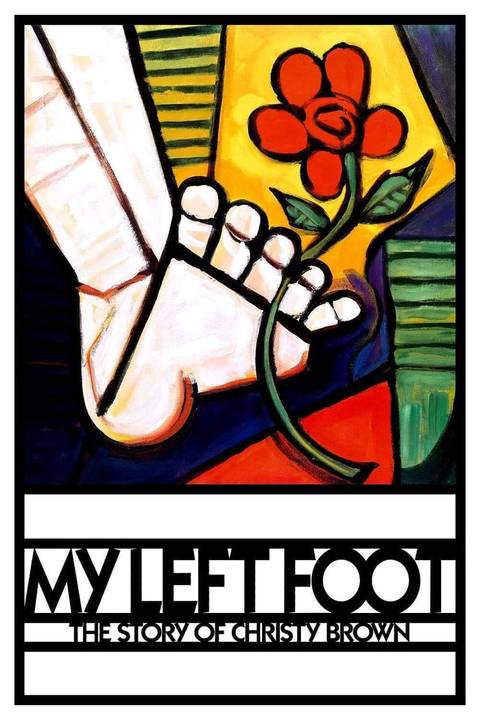Daniel Day-Lewis has often been cited as the greatest actor of all time, and it is easy to see why. While he may not have a filmography that is as extensive as that of Robert De Niro or Jack Nicholson, the commitment that Day-Lewis shows to each of his roles ensures that every project that he is involved with is treated like a major event. Day-Lewis also has the benefit of great taste, as he often works with filmmakers who can match his level of intensity. He’s also been praised for his collaborations with Paul Thomas Anderson, who directed him to an Oscar-winning role in There Will Be Blood and reunited with him for Phantom Thread, which was considered to be Day-Lewis’s final role before he announced that he was coming out of retirement for Anemone. However, Day-Lewis would not have the career he has today if it weren’t for his series of collaborations with the director Jim Sheridan.
Sheridan emerged as a prominent Irish playwright and began collaborating with Day-Lewis after they had both earned praise for their distinguished work on stage. Although the qualities of a film and a stage play are very different, Sheridan understood how to allow his actors to give emotionally vulnerable, intimate performances that lacked the plasticity of most Hollywood productions. This proved to be the perfect approach for Day-Lewis, who was able to do his best work through his physical transformations and ability to stay in character for the entirety of a shoot. Day-Lewis and Sheridan got their breakout at the same time, as the three films that they made together are considered to be classics.
Jim Sheridan Gave Daniel Day-Lewis His Breakout Role
Sheridan crafted an ambitious directorial debut of all time with My Left Foot, a biopic about Christy Brown, an Irish painter and writer who suffered from cerebral palsy that made it nearly impossible to move most of his body. Approaching such a sensitive subject was always going to be a challenge, as My Left Foot had to both cast an actor who could feasibly make the dramatic physical transformation and find a way to make Brown’s story feel engaging and inspiring. Sheridan’s grounded, naturalistic approach allowed Day-Lewis to give a tremendous performance in My Left Foot, as his previous roles had only been few and far between. Even though he was by far the least famous of the nominees, Day-Lewis ended up winning the Academy Award for Best Actor for his performance in My Left Foot, beating veterans like Tom Cruise in Born on the Fourth of July and Robin Williams in Dead Poets Society.
My Left Foot is remarkable because it avoided many of the clichés that are common within the type of inspirational biopics that often do well at the Oscars. Sheridan created a tactile, entertaining film that aimed to show the merits of Brown’s achievements as an artist, and didn’t just beg the viewer to have sympathy for him. The subtle humor, romanticism, and whimsical approach to the material allowed Day-Lewis to get further into character, as it never felt like he had to conform to a more traditional structure. Day-Lewis became so synonymous with the role that there was immense speculation as to what he would do next; since there were no signs of his real persona within his role as Brown, it felt like Day-Lewis could bend himself to fit within any number of different roles. Thankfully, Sheridan was aware of what the young star was capable of and gave him a series of subsequent opportunities to subvert expectations.
‘In the Name of the Father’ and ‘The Boxer’ Are Underrated Classics
Sheridan and Day-Lewis once again found themselves in Oscar consideration for In the Name of the Father, a powerful biopic that earned nominations for Best Picture, Best Director, Best Actor for Day-Lewis, and Best Supporting Actor for Pete Postlethwaite. Day-Lewis would later cite Postlethwaite as one of the actors who inspired him to take up the profession, and referred to him as one of the all-time greatest. In The Name of the Father was an intensely personal film for both Sheridan and Day-Lewis, as they had both lived at Ireland at various points in their lives. The film told a historical story about the injustices committed by the British government against innocent Irish civilians accused of being in the IRA, but it also struck many close parallels with recent ethno-national conflicts in Europe. Even though In the Name of the Father was a brutal prison thriller and an electrifying courtroom drama all at once, the film packed an emotional punch thanks to the heartbreaking father-son dynamic between Day-Lewis and Postlethwaite.
While their third collaboration wasn’t nearly as popular, it was still a remarkable film that offered a very different perspective on an inspirational sports story. Day-Lewis made one of his most dramatic physical transformations in The Boxer, a bracing sports drama about a former IRA member forced to fight to provide for his family. In addition to connecting to some of the political themes that had been brought up from In the Name of the Father, Day-Lewis proved that he could be a physically imposing, elusive character, and previewed the intense work he would later do in Gangs of New York and There Will Be Blood. If Day-Lewis does continue to act beyond his role in Anemone, then there would be no better reunion than if he decided to make another film with Sheridan.

- Release Date
-
April 7, 1989
- Runtime
-
103 minutes
- Director
-
Jim Sheridan
- Writers
-
Shane Connaughton
- Producers
-
Noel Pearson, Paul M. Heller
-

Brenda Fricker
Mrs. Brown
-

Daniel Day-Lewis
Christy Brown
-

-










